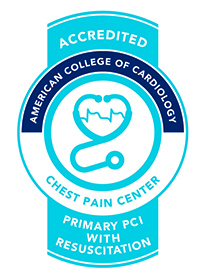Cardiac catheterization
Our interventional cardiologists use minimally invasive cardiac catheterization to diagnose and treat heart disease.
What is cardiac catheterization?
Cardiac catheterization is a minimally invasive procedure that uses catheters (thin, flexible tubes) to diagnose and treat heart disease, such as blocked arteries, heart arrhythmia and heart valve problems. The procedure is performed by an interventional cardiologist — a heart doctor who specializes in catheter-based approaches.
To perform cardiac catheterization, your doctor makes a tiny incision in your upper arm or thigh and inserts a catheter into a large blood vessel leading to your heart. We use advanced X-ray technology, called fluoroscopy, to see a real-time video of the inside of your heart and arteries. Typically, you’re awake during the procedure, but we give you medicine to help you relax and keep you comfortable.
We perform cardiac catheterization in our technologically advanced cardiac cath lab. Our team of interventional cardiologists, imaging technologists, and cardiac nurses follow the strictest safety guidelines to ensure your health and well-being. We tell you what to expect during and after your procedure and make your experience as worry-free and comfortable as possible.
How we use cardiac catheterization
We use cardiac catheterization to help us diagnose heart problems and create a treatment plan that’s right for you. It allows us to:
- Diagnose heart disease, such as valve problems and congenital heart defects (present at birth)
- Look for narrowed or clogged arteries that could cause angina (chest pain)
- Evaluate how your heart is working, including how well it pumps blood
- Measure pressure and oxygen levels within your heart
- Take a sample of heart tissue
We also use cardiac catheterization during minimally invasive heart procedures, such as balloon valvoplasty and heart valve surgery.
Angiography
We use an angiogram to capture video images of the inside of your blood vessels or heart and look for problems, such as blood clots or narrowed arteries. We inject dye into the catheter, which makes it easier to see internal structures. Angiograms help us diagnose heart and vascular diseases and decide on the best treatment.
Coronary angioplasty
Also called percutaneous coronary intervention (PCI), we use minimally invasive coronary angioplasty to provide lifesaving heart attack care— when every second counts. We guide a catheter with a deflated balloon at the tip into the blocked artery. When we inflate the balloon, it opens the artery and restores blood flow. Sometimes we place a small mesh tube called a stent in the artery to hold it open.
Our fast, expert heart attack care earned us Chest Pain Center accreditation from the American College of Cardiology. This accreditation means our team has the expertise, tools and technology to deliver the highest level of care for cardiac emergencies.
